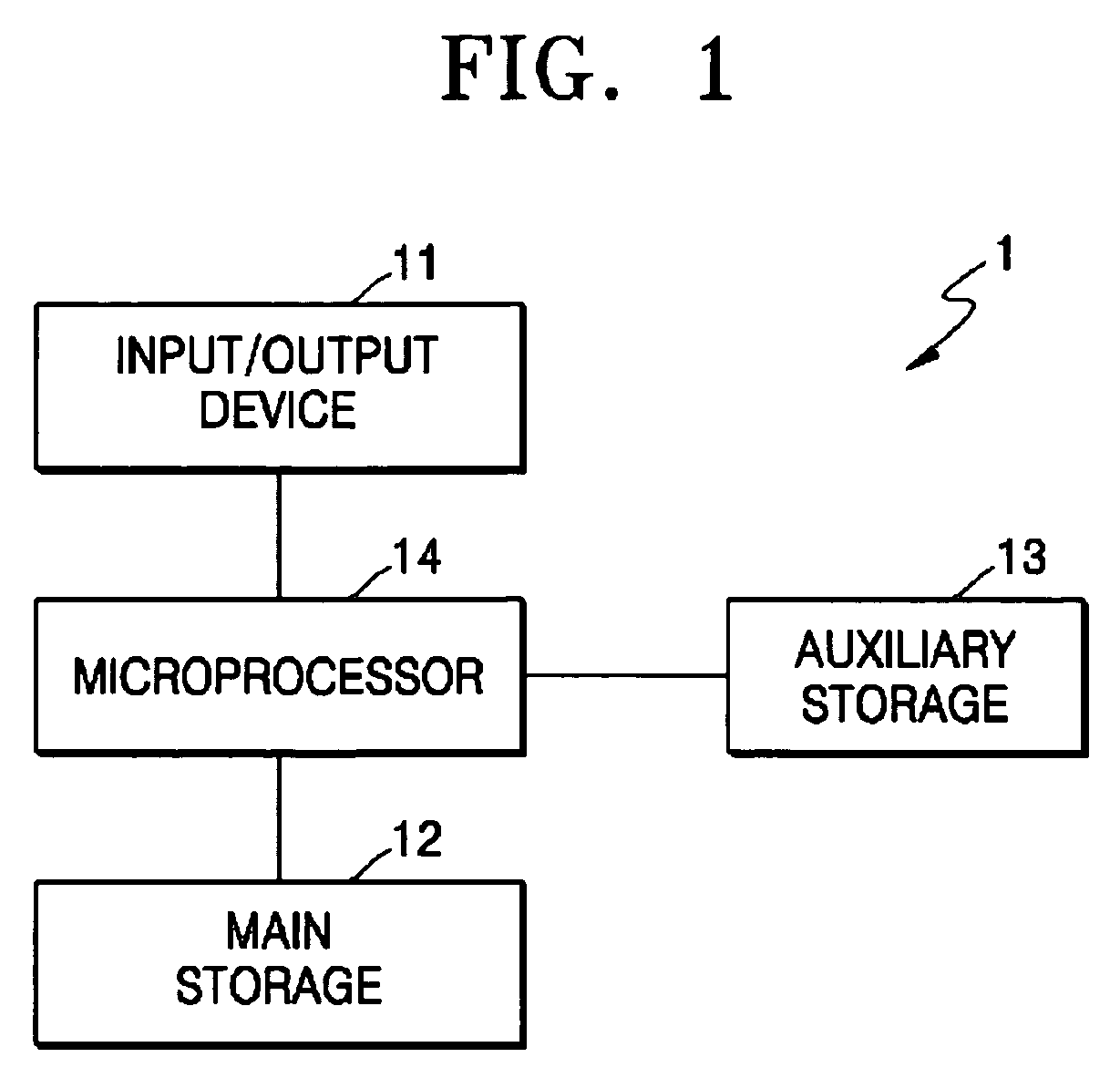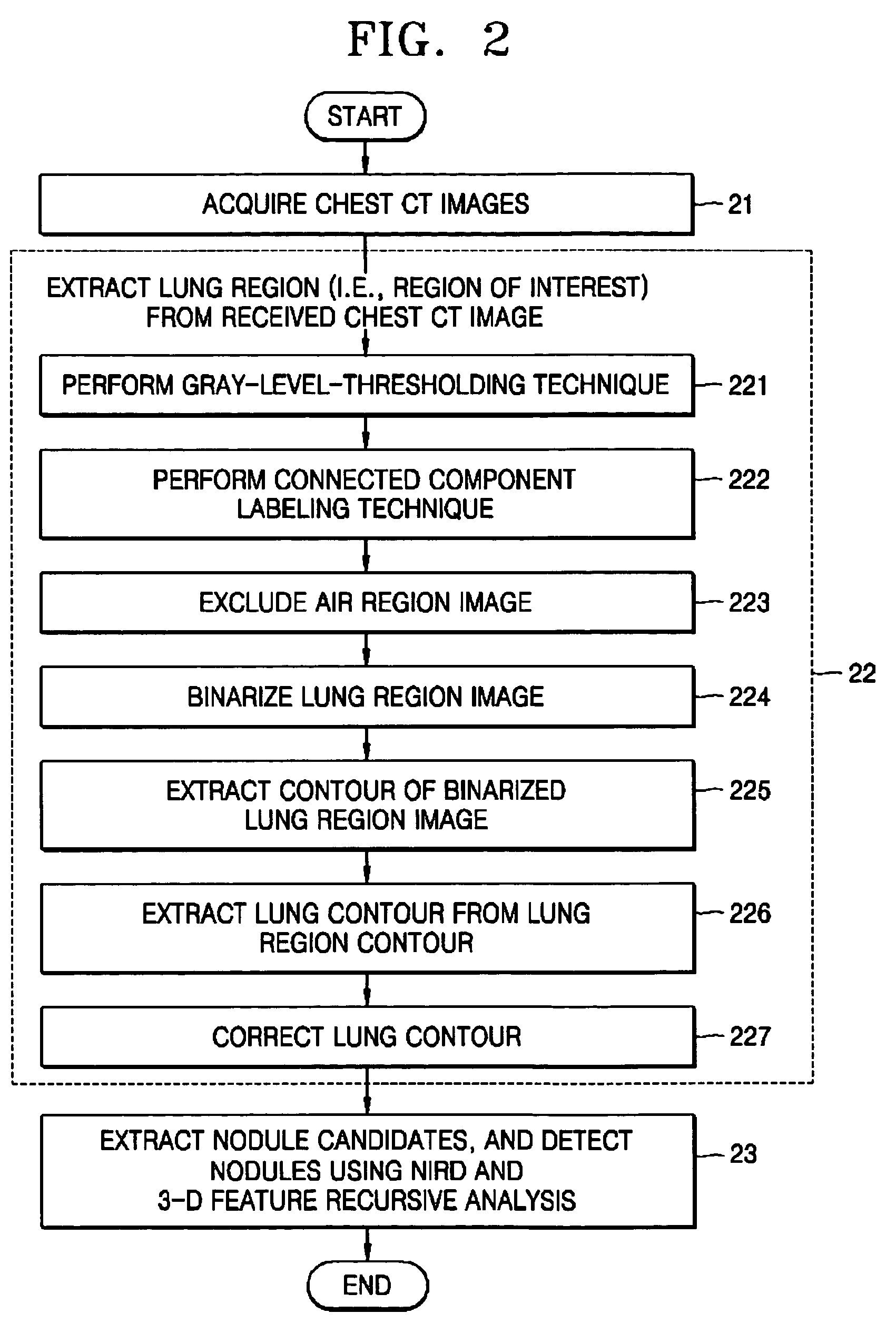Method of automatically detecting pulmonary nodules from multi-slice computed tomographic images and recording medium in which the method is recorded
a computed tomography and image technology, applied in the field of automatic detection of pulmonary nodules from a chest computed tomography (ct) image, can solve the problems of too much image data for physicians to interpret, the five-year survival rate cannot be increased, and the examination of ct images, etc., to achieve accurate 3d feature analysis and increase the accuracy of pulmonary nodules
- Summary
- Abstract
- Description
- Claims
- Application Information
AI Technical Summary
Benefits of technology
Problems solved by technology
Method used
Image
Examples
Embodiment Construction
[0031] The present invention will now be described more fully with reference to the accompanying drawings, in which exemplary embodiments of the invention are shown. The invention may, however, be embodied in many different forms and should not be construed as being limited to the embodiments set forth herein; rather, these embodiments are provided so that this disclosure will be thorough and complete, and will fully convey the concept of the invention to those skilled in the art. In the drawings, the forms of elements are exaggerated for clarity. To facilitate understanding, identical reference numerals have been used, where possible, to designate identical elements that are common to the figures.
[0032]FIG. 1 is a block diagram of a hardware system 1 to which the present invention is applied. Referring to FIG. 1, the hardware system 1 includes an input / output device 11, main and auxiliary storages 12 and 13, and a microprocessor 14. The input / output device 11 is used by an externa...
PUM
 Login to View More
Login to View More Abstract
Description
Claims
Application Information
 Login to View More
Login to View More - R&D
- Intellectual Property
- Life Sciences
- Materials
- Tech Scout
- Unparalleled Data Quality
- Higher Quality Content
- 60% Fewer Hallucinations
Browse by: Latest US Patents, China's latest patents, Technical Efficacy Thesaurus, Application Domain, Technology Topic, Popular Technical Reports.
© 2025 PatSnap. All rights reserved.Legal|Privacy policy|Modern Slavery Act Transparency Statement|Sitemap|About US| Contact US: help@patsnap.com



